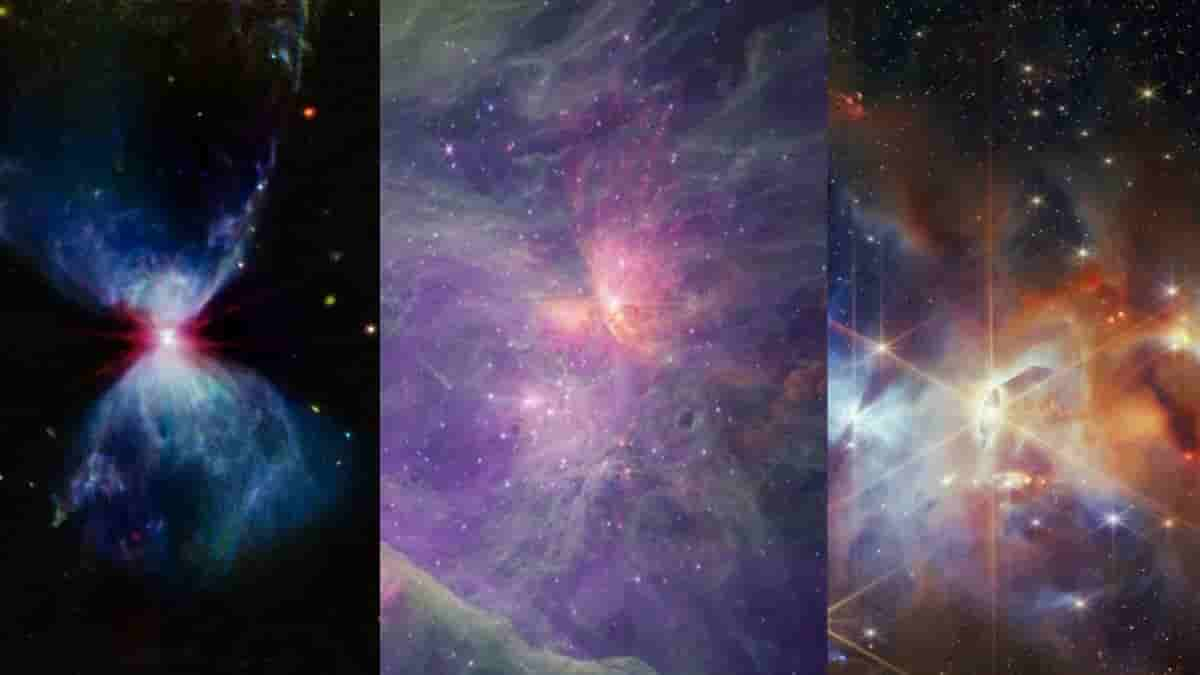NASA images of Protostars and Nebula shows us that the space is mysterious yet beautiful

The space is full of exotic wonders. Scientists, astronauts, and space agencies are on a journey of exploration every day to uncover the mysteries of the universe. Space agencies, through the help of their telescopes often bring to us exciting images of space. NASA’s James Webb and Hubble Space are two such telescopes that constantly provide mysterious images of various entities of the universe.
let’s have a look at some such pictures of protostars and nebula.
For the unversed, a star is a Protostar before becoming a full-fledged star. It becomes a star only when it can fuse hydrogen into helium. Until then it is known as a Protostar.
On the other hand, a nebula is a giant cloud of dust and gas in space. Often, nebulae form from the gas and dust that gets ejected out when a dying star explodes.
Moving on to the pictures, the first picture that we are featuring is an image of a fiery hourglass-shaped protostar, which is situated 460 light-years away from us. It resides in the Tauras constellation. NASA’s James Webb telescope captured this image.

Next is a picture of a young multi-star system, which is situated about 450 million light-years away. A new protostar named FS Tau B can be seen within the star system.

This next image shows a young stellar nursery amidst the Serpens Nebula, which is situated 1,300 light-years away. The nursery features newly forming stars which are about 1-2 million years old.

Coming to the next, this is an image of a massive star formation with a protostellar jet streaming towards us. The image was captured by the Hubble space telescope. The star formation is located in the constellation Aquila, which is about 7,200 light-years from Earth.

Lastly, this image shows the Orion Nebula which presents a wealth of diversity for astronomers. It features outflows, embedded protostars, brown dwarfs, free-floating planetary objects, and planet-forming disks around young stars.



